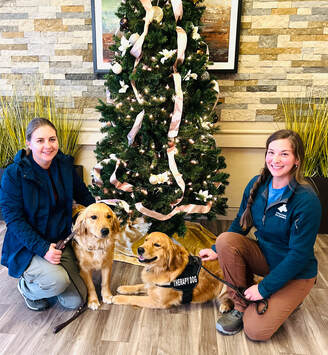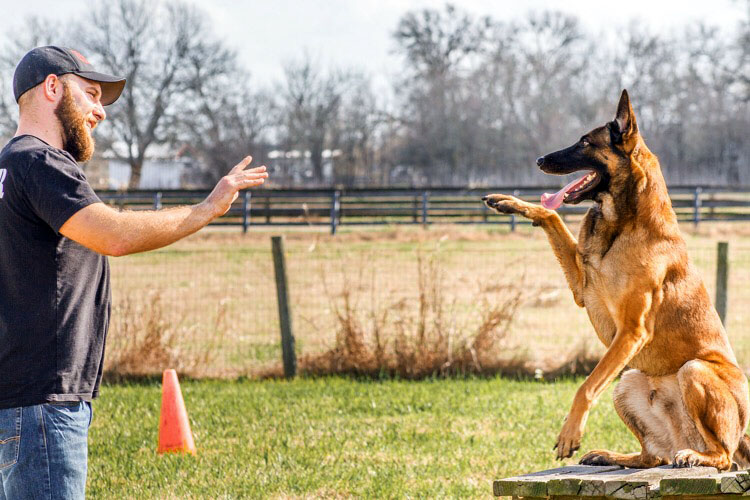Important Tips for Effective Dog Training: An Overview for Family Pet Owners
Effective pet training is a multifaceted procedure that needs a critical strategy customized to both the family pet's character and the owner's objectives. Recognizing exactly how to navigate these challenges can dramatically boost the training experience, inevitably transforming the connection in between owner and canine.
Understanding Canine Behavior
Recognizing canine actions is essential for effective training and fostering a harmonious relationship in between dogs and their proprietors. dog training. Dogs interact mainly via body language, vocalizations, and actions, making it critical for owners to translate these signals properly.

Socialization plays a considerable duty in pet habits; direct exposure to numerous atmospheres, individuals, and other pets can substantially influence a canine's personality. Moreover, elements such as type attributes and specific character need to lead training approaches, as some breeds may have details behavior qualities that demand tailored methods. By comprehending these elements, proprietors can produce a supportive setting that encourages favorable behavior, leading to successful training results and a deeper bond with their family pets.
Establishing Constant Commands
Reliable communication with your pet begins with developing regular commands. This foundational aspect of training is essential for cultivating understanding between you and your family pet. Consistency in the commands you utilize makes certain that your dog can dependably connect specific words or phrases with the desired habits.
When picking commands, select clear, distinct words that are simple to claim and distinguish from each other. Prevent making use of similar-sounding commands that might confuse your pet dog. For instance, utilizing "rest" and "remain" is suitable, however "rest" and "struck" could result in misconceptions.
In addition, keep the same tone and volume for each command. Canines are delicate to vocal hints, so varying your tone can create complication.
It is equally important to ensure that all relative get on the exact same page relating to the commands used. A united front in command use will certainly avoid mixed signals and enhance the discovering procedure.
Positive Support Methods
The power of favorable reinforcement in dog training exists in its ability to urge preferred behaviors through incentives and praise. This technique is based in the principle that behaviors complied with by favorable outcomes are most likely to be repeated. By including positive reinforcement right into your training program, you can effectively form your dog's habits in a constructive fashion.
To carry out positive reinforcement, it's important to recognize what motivates your pet, whether it be treats, playthings, or spoken praise. When your pet dog does a desired action, such as remaining on command, promptly compensate them with a reward or affection. This organization in between the command and the positive result reinforces their understanding.
It's critical to timing the benefits appropriately; delivering the reinforcement within seconds of the preferred actions helps your pet dog make the link (dog training). Furthermore, consistency is key-- make certain that all relative use the very same commands and reward systems to avoid confusion

Progressively, you can decrease the frequency of deals with as your pet dog discovers the actions, transitioning to praise i was reading this or intermittent rewards. This technique not only fosters a strong bond between you and your canine however likewise advertises a favorable knowing atmosphere, making training a satisfying experience for both.
Socialization and Communication
Constantly revealing your pet to a selection of settings, individuals, and various other animals is essential for their social development. Socialization ought to begin early, ideally throughout the crucial window of 3 to 14 weeks, when pups are most responsive to brand-new experiences. Older pet dogs can likewise benefit from recurring socializing initiatives.
Introduce your canine to different setups, such as parks, pet-friendly shops, and metropolitan areas. This exposure aids them adjust to different stimuli, minimizing stress and anxiety and concern actions. Encourage positive communications with various other canines and people, ensuring that these experiences are regulated and risk-free to promote self-confidence.
Utilize organized playdates with well-mannered pets, as this can improve your pet's social skills and educate them proper behavior. Obedience courses and training sessions also supply outstanding possibilities for socializing, allowing your pet dog to interact with others in a monitored environment.
Display your canine's body movement during interactions, as this will certainly assist you gauge their convenience degree. Gradually raise exposure to even more challenging circumstances while ensuring that each experience declares. A well-socialized canine is most likely to show balanced actions, making them a pleasure to have in any setup.
Resolving Common Training Obstacles
Every dog owner will certainly experience training obstacles at some factor, no matter of their dog's age or socialization level. Determining common problems such as stubbornness, interruptions, and fearfulness can aid in developing effective techniques for enhancement.

Slowly introduce distractions as the dog comes to be extra skillful in commands. Short, constant training sessions are likewise efficient in maintaining focus.
Terror can impede a dog's learning procedure. Progressive desensitization to the source of worry, paired with favorable support, can help reduce anxiety. Perseverance is crucial; never force a canine into a situation that creates distress, as this might aggravate the concern.
Inevitably, understanding and addressing these usual obstacles with an organized strategy will certainly cultivate a more productive training experience, reinforcing the bond in between pet dog and proprietor while promoting reliable understanding.
Conclusion
In recap, successful pet training counts on a thorough understanding of canine actions, the facility of consistent commands, and the application of favorable reinforcement methods. Socialization plays a critical duty in establishing well-adjusted pets, while dealing with typical training challenges calls for patience and flexibility. By implementing these crucial techniques, pet dog owners can promote a solid bond with their dogs and promote preferable actions, ultimately leading to an unified relationship between human beings and their canine companions.
Understanding pet dog actions is essential for efficient training and promoting an unified partnership between canines and their owners.Socialization plays a considerable duty in pet behavior; exposure to various environments, people, and various other pets can dramatically affect a pet dog's personality.The power of positive reinforcement in canine training lies in its capability to urge desired habits via incentives and praise. By integrating favorable reinforcement into your training routine, you can efficiently shape your pet's actions in a constructive manner.
In summary, effective canine training relies on try this out an extensive understanding of canine behavior, the establishment of consistent commands, and the application of favorable support methods.